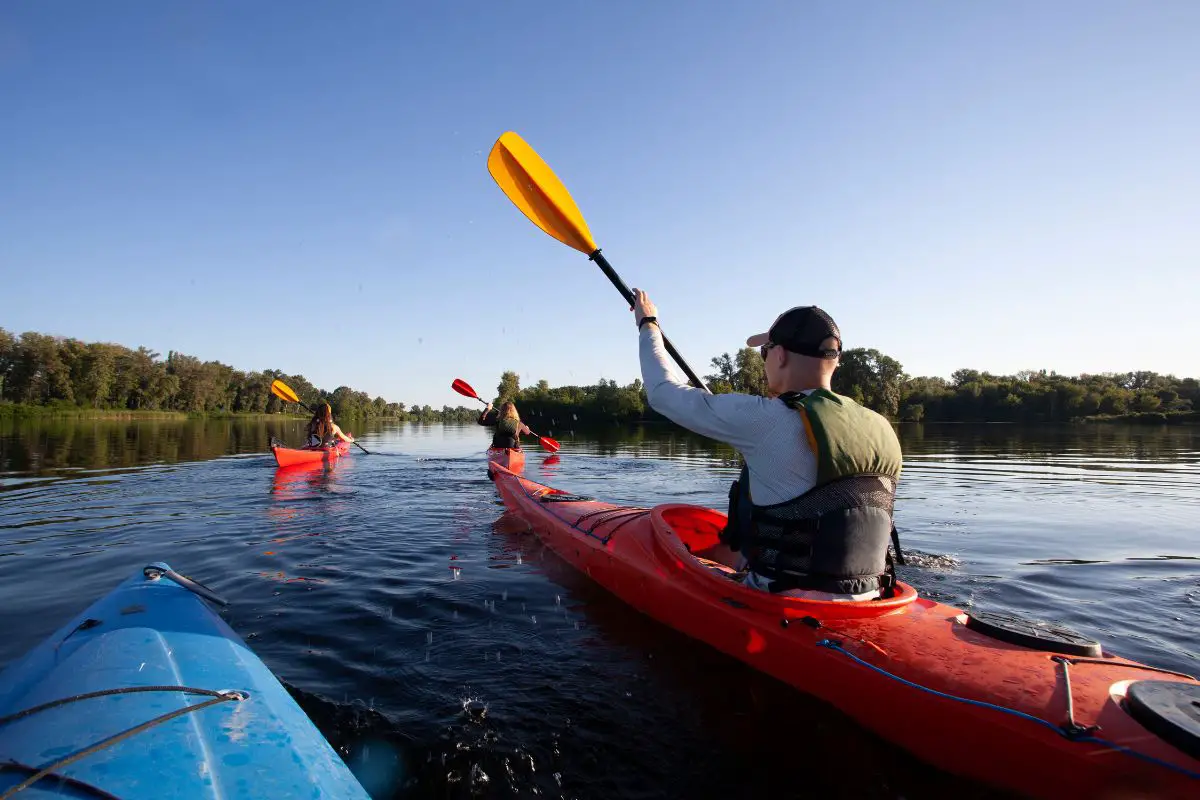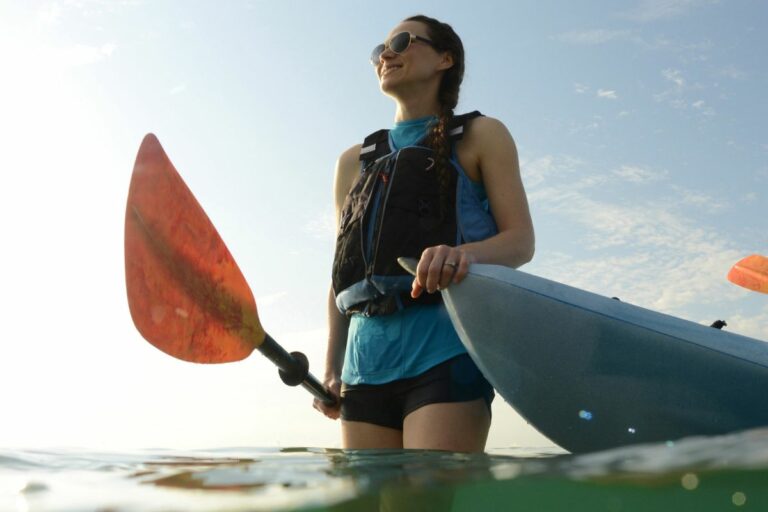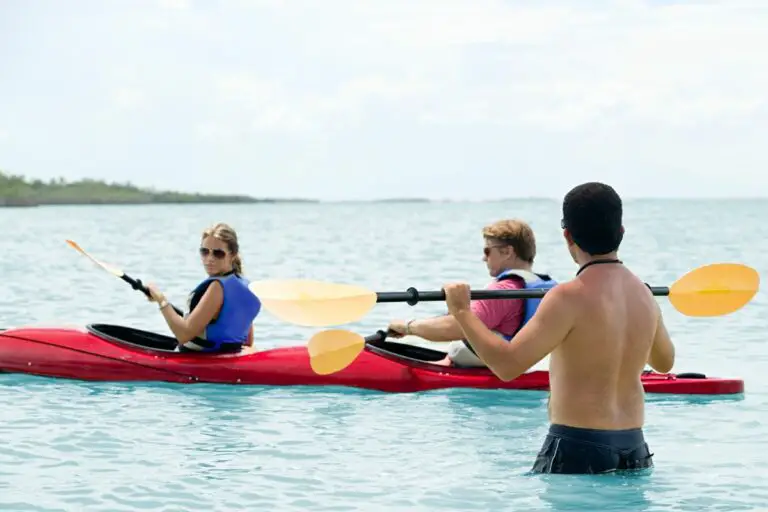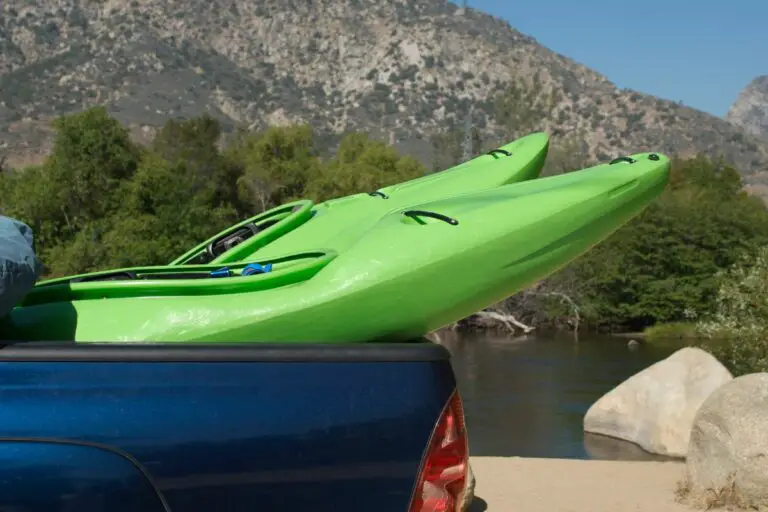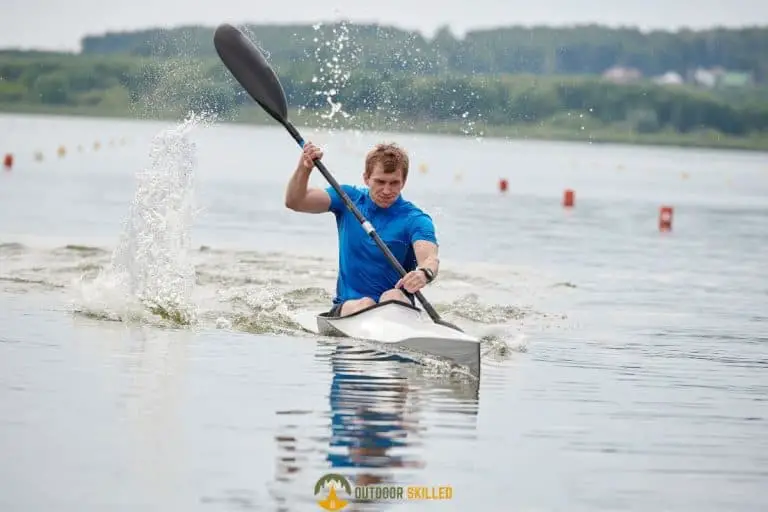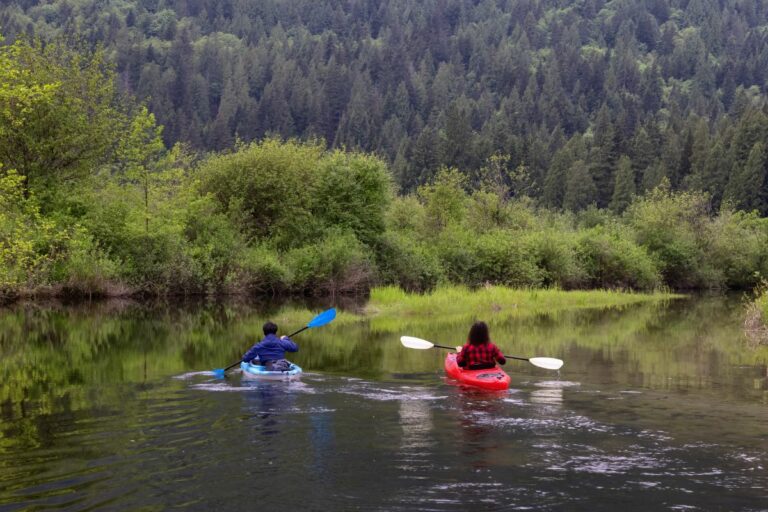How Long Does It Take to Kayak A Mile? 7 Tips to Kayak Faster
For most people, kayaking is a way to enjoy peaceful surroundings at a leisurely pace. However, there are some competitive people who are more interested in pushing themselves to their limits.
Still, kayaking requires physical exertion and endurance, and paddling just a mile can be harder than you think. So, how long does it take to kayak a mile?
It takes 15-30 minutes for a beginner to kayak a mile; however, it may take an experienced kayaker or a competitive athlete less time. The time it takes to kayak a mile depends mostly on the kayaker’s abilities in addition to the kayaking speed and environmental conditions.
Keep reading to learn more about the factors that affect kayak speed and how to kayak a mile in less time.
Table of Contents
Is It Hard to Kayak A Mile?

While kayaking may seem like a leisurely activity, paddling through water can put significant strain on your upper body, especially if you are not used to the movement.
Kayaking a mile can be hard, particularly if you’re a beginner, as it requires a certain level of physical exertion and endurance, but it can still be a very rewarding experience as long as you’re prepared for the physical challenges it poses and take steps to build your strength and endurance before setting out on the water.
How Long Does It Take to Kayak A Mile?
Beginners may take anywhere from 15 to 30 minutes to kayak a mile, while experienced kayakers can complete the same distance in less time, about 10 to 15 minutes. Then there are competitive athletes, such as those participating in kayak races, who are likely to complete a mile in under 10 minutes.
So, as you can see, the time it takes to kayak a mile can vary greatly depending on the kayaker’s abilities.
- Beginners may struggle to maintain a steady pace and tire more quickly, which can impact the time it takes them to paddle a mile.
- Experienced kayakers are more efficient with their strokes and have higher endurance, so they’ll be able to complete the distance more quickly.
- Competitive athletes have a high level of training and are extremely proficient in their technique, so they’ll be able to complete a mile in the shortest amount of time.
There are other factors that affect kayak speed and how long it takes to kayak a mile, so let’s take a quick look at all these factors.
Kayaking Duration calculator:
In order to have a better grasp of how long it takes to kayak a certain distance, I’ve made this simple tool. You can simply input your speed and distance, and it will tell you how long it will take you to cover this distance.
Kayaking Time Calculator
7 Factors That Affect Kayak Speed
- Kayak design: The design of kayak plays a crucial role in determining its speed. Kayaks with narrow and long hulls tend to be faster than shorter and wider ones. Additionally, the shape of the kayak’s bow and stern can impact how efficiently it moves through the water.
- Paddle type: The type of paddle used can impact kayak speed. Longer and narrower paddles tend to be more efficient, while wider paddles provide more stability. The paddle’s material, weight, and blade shape can also influence speed.
- Physical fitness: A kayaker’s physical fitness level can significantly impact their speed. Stronger, more fit kayakers can generate more power with each stroke and maintain a higher paddling cadence for longer periods of time.
- Paddling technique: Proper paddling technique is crucial for maximizing kayak speed. Skilled paddlers use efficient, powerful strokes that propel the kayak forward with less effort.
- Weather conditions: Wind, rain, and temperature can impact kayak speed. Strong headwinds and rough waters can slow the kayak down, while tailwinds can increase speed.
- Water conditions: The current, waves, and water temperature can also affect kayak speed. Calm, still waters provide ideal conditions for fast paddling, while choppy or turbulent waters can slow the kayak down.
- Kayak weight and weight onboard: The weight of the kayak and the load onboard can also impact speed. Heavier kayaks require more effort to paddle, while a heavy load can affect the kayak’s stability and balance.
How Many Miles Can You Kayak in A Day?
The average kayaking speed ranges from 3 to 4 miles per hour, so most recreational kayakers can kayak between 10 to 20 miles per day. However, experienced kayakers or competitive athletes may be able to kayak longer distances, up to 30-40 miles per day or more, depending on the factors mentioned above.
How to Kayak A Mile in Less Time?

Now that you know the factors that affect the time it takes to kayak a mile, you might want to take your kayaking skill to the next level and improve your speed. Here are some tips to help you with that:
- Optimize kayak design: Choose a kayak with a streamlined, narrow hull for maximum speed. Additionally, look for a kayak with a bow and stern designed for efficiency.
- Use the right paddle: Choose a paddle that is the right length and weight for your body and kayaking style. I recommend this HIKULA Aluminum paddle on Amazon; it’s lightweight, adjustable, and has longer, narrower blades that will allow for more efficient and faster paddling.
- Improve physical fitness: Build strength and endurance through regular exercises, such as weightlifting, cardio, and core workouts. This will allow you to generate more power with each stroke and maintain a higher paddling cadence.
- Focus on proper paddling technique: Learn efficient and powerful strokes that allow you to propel the kayak forward with less effort.
- Take advantage of favorable conditions: Paddle in calm, still waters whenever possible, and take advantage of tailwinds or currents that flow in the same direction as you.
- Reduce weight onboard: Limit the amount of gear and supplies you carry on your kayak to reduce weight and improve speed. Additionally, choose lightweight equipment and clothing for your paddling trip.
- Practice consistently: Regular practice and training will help you build strength and endurance, as well as improve your technique and speed.
By following these tips, you can improve your kayak speed and reduce the time it takes to kayak a mile. But remember, you should always prioritize your safety and take proper precautions to avoid any accidents.
If you’re not sure which paddle board to go for, I recommend this Sportic Pro SUP Paddle Board; it is ideal for a beginner with its rugged design, triple fins, and non-slip deck to guarantee maximum stability. It also comes with an adjustable Paddle, a safety leash, and a carry bag.

Kayak your way to Freedom
- On a budget? Check out the best fishing kayaks under $500 here and the best Fishing Kayaks under $1,000 here. Or Check the best Cheap Kayaks here.
- Going fishing? Here are the best Ocean fishing kayaks, and here are the best River Fishing Kayaks.
- You can also find the best Fly Fishing Kayaks here and the best Bass Fishing Boats here.
- A bit experienced? Check out the best modular kayaks here and the best tandem fishing kayaks here.
- Looking for something special? Check out my favorite Ducky kayaks here.
- Navigate your way with these awesome and beginner-friendly Kayak compasses.
- Going Hunting? These Duck hunting kayaks will give you an unfair advantage!
- Have a need for speed? These motorized kayaks will get you moving.
- Protect yourself from the sun with these Kayak shades, and make your kayak more comfortable with these Kayak seats.
- Keep your feet dry and warm with these superb Kayaking shoes.
- Going Kayaking in cold water? Stay warm with these Kayaking gloves.
- Paddle Less, Fish More with the Best Kayak Motors
- Looking to get a trolling motor on your kayak? Check out the best kayak trolling motor mounts here.
If you like this article, please share it or pin it, you can find the share buttons below. We will really appreciate it ❤️

